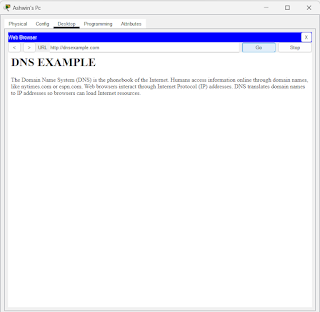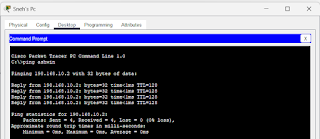DNS: The Backbone of Internet Communication
DNS: The Backbone of Internet
Communication
·
Introduction:
In the intricate web of the internet,
where millions of users navigate daily, lies a crucial yet often overlooked
component: the Domain Name System (DNS). While most users type in domain names
like magic words, DNS quietly works behind the scenes, translating these
human-readable addresses into the numerical IP addresses that computers
understand. In this blog, we embark on a journey to demystify DNS, unraveling
its significance, inner workings, and implications for internet users
worldwide.
·
The Importance of DNS:
DNS serves as the digital directory
of the internet, enabling users to access websites, send emails, and connect
with servers effortlessly. Imagine typing in an IP address every time you
wanted to visit a website – cumbersome, isn't it? DNS simplifies this process
by providing a convenient alias for each IP address, making navigation across
the vast expanse of the internet seamless and intuitive.
·
How DNS Works:
At the heart of DNS lies a distributed network of servers, each playing a specific role in the resolution process. When you enter a domain name in your browser, your device sends a query to a recursive resolver, which then traverses the DNS hierarchy to find the corresponding IP address. This journey involves interactions with root servers, authoritative name servers, and caching resolvers, culminating in the delivery of the requested IP address to your device.
·
Steps to Configure and Verify DNS Server in Cisco
Packet Tracer:
Step 1: First, open the cisco packet tracer desktop and select
the devices given below:
Step 2: Select Two Pc And One
Switch And One Server.
Step 3: Now Make Topology Which is shown below.
Step 4: Now Assign IPv4 Address and DNS SERVER IP Address AS Below .
Step 5: Now On HTTP service from clicking server then click on services and on
it. Make sure your both services should be on which is HTTP and HTTPS.
Step 6: Now Click On index.html And Write The Code Which Show below . After Writing
code make sure you press the save button.
Step 7: Now Click on DNS. Add Name , Add IP ADDRESS. And Then Click Add.
Step 8: Now Click On The Pc And After That Assign Them IP ADDRESS . Like Below I
Assign IP address To Both OF My pc.
Step 9: Now Click On Ashwin Pc’s click on desktop then click browser and after
that click on url and paste it. The address or the dns name. show it will show
the resultant output.
Step 10: Now Click On Sneh’s Pc And Go to Desktop
and after that Click on Command Prompt. And write a command ping ashwin. This
command will connect the ashwin’s pc.
·
Additional Resources:
1. [Internet Systems Consortium
(ISC)](https://www.isc.org/)
2. [DNSSEC Deployment Initiative](https://www.dnssec-deployment.org/)
3. [Cloudflare: Understanding
DNS](https://www.cloudflare.com/learning/dns/what-is-dns/)
· Conclusion:
In the vast ecosystem of the internet, DNS stands as a silent sentinel, guiding users through the digital maze with precision and efficiency. By unraveling the mysteries of DNS, we gain a deeper appreciation for its indispensable role in internet communication and a newfound understanding of the complexities that underpin our online experiences. As we navigate the ever-changing landscape of technology, let us embrace DNS as the backbone of our digital world, empowering us to connect, explore, and thrive in the boundless realm of cyberspace.










Comments
Post a Comment